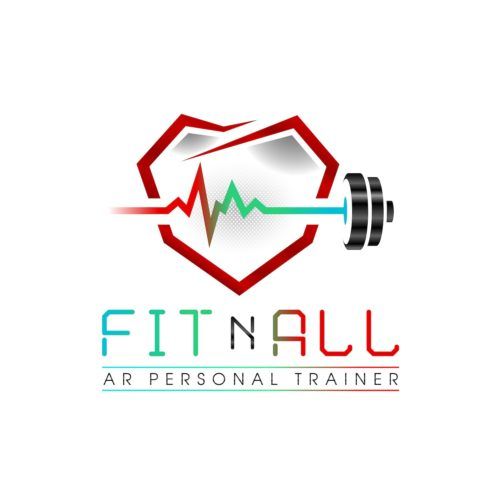Whether you’ve been working remotely and want to ensure you’re prioritizing your health while spending more time at home, or you’re looking to trim your expenses, which might mean pausing or canceling a costly gym membership, there’s no reason your fitness goals have to take a back seat. A well-equipped home gym can give you the tools you need to stay consistent, challenge yourself, and make progress without the commute or ongoing membership fees. The beauty of a home gym is that it can be tailored entirely to your needs, preferences, space, and budget. Plus, having the right gear within arm’s reach makes it easier to stick to your workout plan, stay motivated, and remove common barriers like bad weather or a busy schedule. In this guide, we’ll explore the essential equipment for your home gym so you can create a personal fitness space that supports your health and long-term goals.
Weights
Weights are a cornerstone of any effective home gym setup. Strength training does far more than just sculpt muscles; it plays a critical role in maintaining strong bones, supporting joint health, boosting metabolism, and promoting long-term physical resilience as you age. The good news is that you don’t need an entire wall of massive weights or bulky, expensive machines to get results. A small, well-chosen collection of equipment can cover nearly every major muscle group.
A quality set of adjustable or fixed dumbbells offers endless exercise variations, from bicep curls and shoulder presses to weighted lunges and chest flies. Adding a kettlebell or two further expands your workout possibilities. Kettlebells are incredibly versatile, allowing you to perform dynamic, full-body movements such as swings, goblet squats, kettlebell deadlifts, Turkish get-ups, and kettlebell cleans that challenge your strength, stability, and cardiovascular endurance all at once. Their unique shape makes them perfect for functional training, helping you build power, coordination, and mobility in ways that mimic real-life movements.
With just dumbbells and kettlebells, you can easily design an efficient home workout that targets the entire body, no expensive machines required. Plus, their compact size means they take up minimal space, making them perfect for small apartments, spare rooms, or even a corner of your living area.
Resistance Bands
Weights aren’t your only option for building strength at home. When you want to mix things up or prefer not to work with free weights, resistance bands can be a game-changer. These lightweight, portable tools create tension on your muscles just like weights do, making them highly effective for strength training, toning, and rehabilitation work. They come in different resistance levels, from light to extra-heavy, so you can easily scale your workouts as you get stronger.
One of the biggest advantages of resistance bands is their versatility. You can target virtually every muscle group with exercises like banded squats, lateral walks, chest presses, rows, and bicep curls. Many of these moves require minimal space and can be done in just a few minutes, making them perfect for quick “movement breaks” during the workday to reduce stiffness and boost circulation.
They’re also incredibly travel-friendly, rolling up small enough to fit into a backpack or even a desk drawer. For best results, consider getting a small set of bands with varying resistance levels. That way, you can switch them out for different exercises or progressions, keeping your workouts challenging and effective whether you’re training at home, in the park, or even while on vacation.
A Good Treadmill
Another key element for a well-rounded home gym is equipment for cardiovascular training. Cardio is essential for maintaining heart health, improving endurance, increasing lung capacity, and supporting overall energy levels. While there are many ways to get your cardiovascular fix, few are as straightforward and effective as going for a good run. Running helps you burn calories quickly, boosts your mood through the release of endorphins, and strengthens your lower body with every step.
A treadmill offers the convenience of running or walking without leaving your home, regardless of weather conditions. It’s a reliable tool for weight management, conditioning, and even active recovery on lighter days. You can adjust the speed and incline to match your fitness goals, whether you want a steady-paced jog, high-intensity intervals, or a brisk uphill walk. This flexibility makes it suitable for all fitness levels, from beginners to seasoned runners.
Treadmills for home environments are typically lighter and more compact than commercial gym models, making them easier to move and store. Some even fold up to save space when not in use. When adding one to your home gym, ensure you have a safe, stable area with enough clearance on all sides. And remember, no matter how intense or easy your session is, always start with a proper warmup to prepare your muscles, protect your joints, and reduce injury risk.

An Exercise Bike
If you’d like to change things up even further, consider incorporating interval training or virtual cycling classes into your home bike routine. Many modern exercise bikes come with built-in programs, heart rate monitoring, and app connectivity, allowing you to join live or on-demand rides that keep you engaged and challenged. You can alternate between high-intensity sprints and slower recovery periods to maximize calorie burn and improve cardiovascular endurance in less time. Plus, cycling is low-impact, making it gentler on your joints compared to running, making it ideal for those recovering from injury or looking for a sustainable long-term cardio option. By blending resistance adjustments with structured workouts, you can take your cardio fitness to the next level.
A Foam Roller
Cooling down and taking care of your body after a workout is just as essential as the workout itself. Neglecting recovery can lead to tight muscles, reduced mobility, and a higher risk of strains or overuse injuries. Incorporating post-workout care into your routine helps your body repair and rebuild, ensuring you can train consistently without setbacks. One of the most effective and accessible tools for this is a foam roller. Foam rolling after exercise can help break up adhesions in the fascia, the connective tissue surrounding your muscles, which often tighten up after intense activity. This not only speeds up recovery but can also improve your performance in future workouts.
In addition to reducing soreness, foam rolling can help maintain joint health by keeping surrounding muscles supple and mobile. It’s a versatile tool you can use on your calves, quads, hamstrings, glutes, back, and shoulders. Foam roller exercises after your workouts can make a noticeable difference in how your body feels the next day. For best results, pair your foam rolling with gentle static stretching to further support recovery and maintain flexibility, getting you back into action stronger and sooner.
As you can see, you don’t need a ton of workout machines or a lot of space to make sure that you’re able to get the exercise that you need. Hopefully, the information above helps you choose the essential equipment for your home gym. With just a few versatile pieces, you can create an effective training space that supports strength, cardio, and recovery, all without leaving your home. The key is to start with the basics, build gradually, and focus on equipment that aligns with your goals, space, and budget so your home gym stays practical and motivating for years to come.
To a Fitter Healthier You,
The Fitness Wellness Mentor
About the Author
Adriana Albritton has a Master’s in Forensic Psychology, certifications in personal training, nutrition, detoxification, and is the founder of FitnAll Coaching and blog. She is the author of 28 Days to a New Life: A Holistic Program to Get Fit, Delay Aging, and Enhance Your Mindset, and a coauthor of The Better Business Book Volumes II and III. With a background in mental health, Adriana brings a holistic, science-backed approach to wellness. She combines mindset coaching, fitness, and nutrition to help people stay lean, energized, healthy, and centered. As part of Health Six FIT, she’s also helping reshape healthcare through AI-driven, integrative wellness education.



